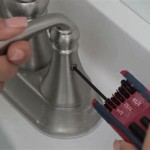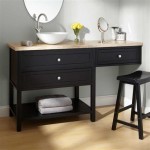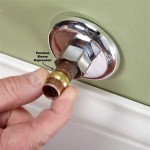Small Bathroom Stand Alone Tubs: A Guide to Soaking in Style
Stand-alone tubs evoke a sense of luxury and relaxation, often associated with spacious bathrooms. However, incorporating this elegant fixture into a smaller bathroom is entirely achievable with careful planning and consideration. This guide explores the crucial aspects of selecting and installing a stand-alone tub in a compact space, transforming a small bathroom into a personal spa retreat.
1. Measuring and Planning for Space Optimization
Before indulging in the aesthetics of a stand-alone tub, meticulous measurements are essential. Accurate dimensions of the bathroom, including door openings, window placement, and existing fixtures, will determine the feasible tub size and shape. Consider leaving sufficient space around the tub for comfortable access and movement, ideally a minimum of 24 inches. This planning phase ensures the tub complements the bathroom without overwhelming the space.
2. Choosing the Right Tub Shape and Size
The market offers a variety of stand-alone tub shapes and sizes, catering to different spatial needs. For smaller bathrooms, compact oval, corner, or slipper tubs are often ideal. A smaller footprint doesn’t necessarily mean sacrificing soaking space; Japanese soaking tubs, designed for a seated bathing experience, offer deep immersion in a compact form. Examining the specific dimensions of various tub styles allows for informed decisions that maximize both comfort and space efficiency.
3. Material Selection: Balancing Aesthetics and Practicality
Stand-alone tubs are available in various materials, each with unique properties and aesthetic appeal. Acrylic tubs are lightweight, affordable, and offer excellent heat retention. Cast iron tubs are durable and retain heat exceptionally well, but their weight requires robust floor support. Copper and stone resin tubs offer a luxurious aesthetic but come at a higher price point. Considering the material's weight, durability, and maintenance requirements is crucial for a practical and long-lasting installation.
4. Plumbing Considerations for a Seamless Installation
Plumbing plays a vital role in the successful installation of a stand-alone tub. The location of existing plumbing lines can influence the tub's placement and may require modifications. Consulting a qualified plumber is essential to assess the existing plumbing and determine the necessary adjustments for connecting the chosen tub. Understanding the plumbing requirements beforehand streamlines the installation process and prevents unexpected complications.
5. Enhancing the Space with Strategic Design Choices
While the tub serves as the centerpiece, thoughtful design choices further enhance the functionality and aesthetics of a small bathroom. Utilizing wall-mounted faucets and storage solutions frees up valuable floor space. Large mirrors create an illusion of spaciousness, while carefully chosen lighting fixtures contribute to a relaxing ambiance. Integrating these elements creates a cohesive and stylish bathroom design.
6. Ventilation and Moisture Control in a Compact Space
Proper ventilation is crucial in any bathroom, particularly in smaller spaces where moisture buildup can be problematic. A well-functioning exhaust fan is essential to remove excess humidity and prevent mold growth. Ensuring adequate ventilation protects the bathroom's finishes and promotes a healthy environment.
7. Incorporating Storage Solutions for a Clutter-Free Environment
Storage is often a challenge in small bathrooms. Incorporating creative storage solutions, such as wall-mounted shelves, recessed niches, or under-sink organizers, maximizes space utilization. Keeping toiletries and other bathroom essentials organized contributes to a clean and uncluttered aesthetic.
By carefully considering these key points, homeowners can successfully integrate a stand-alone tub into a small bathroom, creating a luxurious and relaxing retreat without compromising on space or functionality. Choosing the right tub, planning the layout meticulously, and selecting complementary fixtures and finishes will transform a compact bathroom into a stylish and functional oasis.

Petit Freestanding Bathtub Luxury Stone Resin Tub Small Bath

Can A Freestanding Bathtub Have Shower Tyrrell And Laing

Bathroom Freestanding Tubs Design Photos And Ideas Dwell

12 Bathtubs For Small Spaces 2024 Badeloft

Pin On Bathroom Ideas Inspirations

Pin On Bathroom

Freestanding Vs Built In Bathtubs Pros And Cons

33 Freestanding Bathtubs For A Dreamy Bathroom Digsdigs

11 Freestanding Tub Next To Shower Design Ideas Luxury Tubs

Great Transitional 3 4 Bathroom Tub Shower Small With Combo
Related Posts







